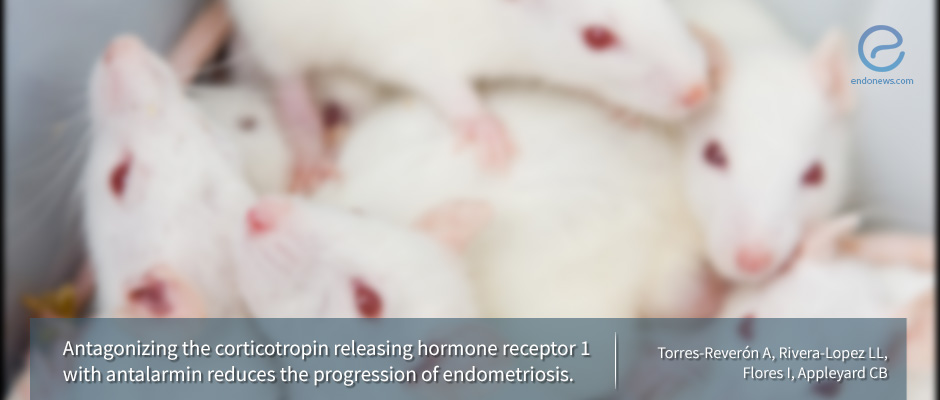Can we prevent the progression of endometriosis?
Feb 15, 2019
Antalarmin inhibits endometriosis progression by corticotropin realizing hormone receptor 1 in rats.
Key Points
Highlights:
- Despite the well-documented role of corticotropin-releasing hormone receptor (CHRH) in stress-related disorders, reproductive function, and inflammation, this is the first experimental study that addressed the role of CHRH1 blocage in the treatment of endometriosis.
Importance:
- Corticotropin is the main hormone secreted from pituitary gland responding to stress and has two receptors to bind the target tissues such as uterus and gut, named CRHR1 and CRHR2.
- Antalarmin may slow down endometriosis by blocking CRHR1.
What's done here:
- Researchers first induced endometriosis in female rats then applied antalarmin to block CRHR1, and the number and size of endometriosis foci were decreased.
Key results:
- Shortly after endometriosis induction of female rats, CHRH1 and ACTH levels were elevated in endometriosis.
- Antagonizing CHRH1 using antalarmin in the early period of endometriosis, ended up with a significant decrease in endometriosis development.
Limitations:
- Antalarmin also has anti-inflammatory activity in peripheral tissues, thus the final effect on endometriosis may not be solely through CRHR1.
- Antalarmin may also negatively affect fertility, thus this issue should also be examined properly in endometriosis patients
Lay Summary
Torres-Reveron et al. from the University of Texas, USA, planned this prospective laboratory research on female rats to assay the reduce on the progression of endometriosis and recently published the results in PloS One.
At first, endometriosis was induced in female rats surgically, while one half have undergone a sham operation.
The authors did not find any significant effect of surgeries on cyclicity or on the behavioral parameters.
After seven days of surgery for generating endometriosis, CHRH1 levels were elevated twice in endometriosis, when compared to the normal uterus.
As a second step of the experiment, to block this rise of CHRH1 receptors of endometriosis induced group, the authors administered "antalarmin" during the first seven days, again creating a control group. They gave swim-stress challenge test to both groups of rats. The endometriosis allowed to progress for 60 days after the surgery.
Antalarmin treatment not only caused a significant decrease both in size and number of endometriosis but also prevented the increase in CRH and CRHR1 within endometriotic tissues as a result of its "CHRH1 receptor blockage" effect. However, the treatment did not affect ACTH and behavioral test results were similar in all groups.
"Our data provide the first in-vivo demonstration for use of CRHR1 antagonist for the treatment of endometriosis opening the possibility for further exploring CRH signaling as a treatment target for this debilitating disease", added the authors.
Research Source: https://www.ncbi.nlm.nih.gov/pubmed/?term=30427841
corticotropin releasing hormone antalarmin ACTH CHRH1 and CHRH2 receptors endometrial vesicles induced endometriosis.

